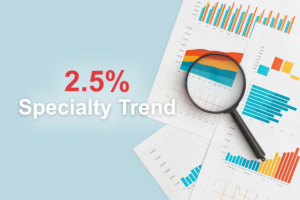When it comes to the prescription drug debate, there’s no question pharmaceutical companies bring value to society. Most Americans have seen their quality of life improve because of a medication invented and/or brought to market by a pharmaceutical company. With maintenance medications being able to manage most chronic conditions today, Pharma is now helping those with rare conditions and bringing cures to market for those without treatment.
But how much should we reward Pharma — how much is too much? Big Pharma has made the debate over pharmaceutical prices as complex as possible.
Merriam-Webster cites the first use of the term “Big Pharma” in 1994. Used to describe large politically-influential pharmaceutical companies, the term is more relevant today. OpenSecrets.org, an independent non-profit tracking money in politics, reported approximately $282 million spent in 2018 lobbying on pharmaceutical and health-related products. The top 10 pharmaceutical companies spent almost $75 million of that total. Campaign contributions add to these totals.
Big Pharma doesn’t stop there. Several companies are working across the country employing lobbyists to get laws passed to prevent programs put in place by plan sponsors to control inappropriate use of products. They sponsor business groups as well as develop and/or fund patient advocacy groups who can carry out their message.
How about paying a competitor from bringing their drug to market and filing lawsuits to delay the launch of competitors’ products, both extending patents of brand drug? This practice, “pay-for-delay,” makes sense because of how much Big Pharma can profit when they extend the exclusivity of their product.
What about copay coupon programs? Health Affairs estimated manufacturers spent $10 billion in 2016 to reduce patients’ out-of-pocket costs through coupons. While great for consumers’ wallets, it weakens the plan design meant to promote lower cost, yet still effective treatment plans. This results in more expensive products to the plan sponsor and costs to the system.
These coupons are popular among patients, not only for the reduced or eliminated out-of-pocket costs, but because they can count toward the patient’s out-of-pocket maximums. Many pharmacy benefit managers recently put in accumulator programs to fix the issue of coupons counting toward a patient’s out-of-pocket maximums, yet Arizona, Virginia and West Virginia have passed laws prohibiting this practice. Likely passed under the guise of helping patients with out-of-control medical costs, coupons contribute to added costs.
Let’s talk about direct-to-consumer advertising. Banned in all developed countries except for the United States and New Zealand, Big Pharma spent over $6 billion in 2017 on direct-to-consumer advertising according to Kantar Media.
Big Pharma loves the Department of Health and Human Services’ proposal to end Medicare and Medicaid rebates. Why wouldn’t they? Even though rebates and formulary placement are far from perfect, they are still an important tool against Big Pharma to control the cost of medications.
The Campaign for Sustainable Rx Pricing recently found Big Pharma spent 19% of revenue on marketing, advertising and promotion. Research and development costs were higher at 22%. If these medications are all so great, why do they need to spend 19% of all revenues to get people to use them – almost as much as they are spending to discover new drugs? This study also reported an 18% profit margin.
Whether a plan sponsor, someone working with a plan sponsor, or a consumer with the right to vote, it’s important to be aware of how Big Pharma drives the debate over prescription drug prices. The Institute for Clinical and Economic Review (ICER) is a not-for-profit group conducting studies to determine medications’ value to patients. Wisely, profitability isn’t a factor in ICER’s review. The debate over how much Pharma should profit is difficult.




